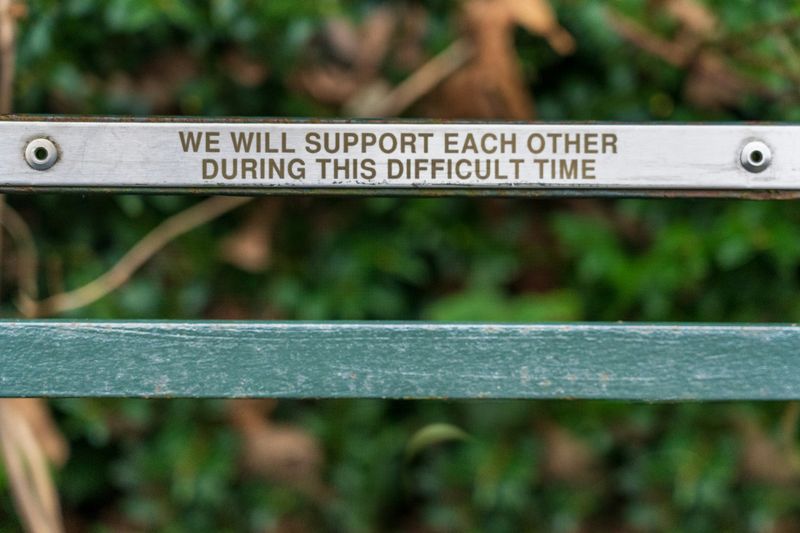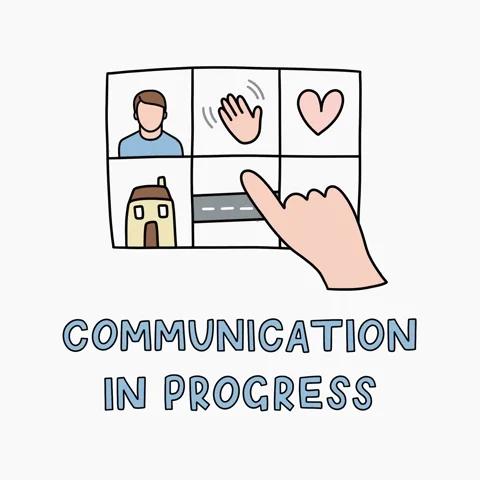
Ever feel like you’re talking but nobody’s really listening, or that you and your family are on completely different wavelengths?
Maybe you’re trying to explain yourself — but instead of feeling heard or supported, you just get misunderstood, annoyed, or stressed. It’s frustrating when you care so much about your relationships but keep bumping up against a wall.

The good news? Supportive communication isn’t about avoiding tough conversations — it’s about navigating them in a way that helps everyone feel heard, valued, and respected.
What is Supportive Communication?
 Photo by Nick Fewings on Unsplash
Photo by Nick Fewings on UnsplashSupportive communication means choosing your...
words
tone of voice
way of listening
...to show your understanding, care, and kindness — even when things get tough.

Supportive communication helps ease conflict, foster trust, and make sure everyone feels valued. These strategies can make your relationships less stressful and help you navigate tricky situations with your family.
According to relationship experts, using supportive communication strategies like active listening and setting healthy boundaries can help ease tensions and ensure that everyone feels heard, valued, and supported.
1. Set Your Intention
 Before you jump into any conversation with a family member — whether it’s to sort out a disagreement, ask for something, or just clear the air — it’s worth taking a few seconds to ask yourself:
Before you jump into any conversation with a family member — whether it’s to sort out a disagreement, ask for something, or just clear the air — it’s worth taking a few seconds to ask yourself:
What do I actually want to say? What do I want from this conversation?
Going in with a clear, positive intention helps stop the talk from spiralling into something messy. It’s like setting your GPS before you hit the road.

Do
Take a second to ground yourself — take a deep breath and clear your head.
Think: What’s my goal here? (e.g. connection, understanding, compromise)
Be kind in your mindset — start with goodwill.

Don't
Go in looking for a showdown or a way to blame your family.
Raise points from the past just to attack or guilt-trip.
Start a conversation just because you’re in the heat of emotion.
Focus on winning or “being right".
2. Choose the Right Time & Place
 Consider when and where you’re most likely to connect and appreciate each other; perhaps a calm, comfortable spot with few distractions. Making space for a healthy dialogue signals respect and care for both of you.
Consider when and where you’re most likely to connect and appreciate each other; perhaps a calm, comfortable spot with few distractions. Making space for a healthy dialogue signals respect and care for both of you.
Timing and setting can make or break how well you’re heard.
A chill environment = way better chance for connection.

Do
Find a space where you’re both comfortable and can talk without distractions.
Choose a time when you’re rested, not stressed or rushed.
Turn off notifications or put away your phone to be fully present.
Give a heads-up if the topic is heavy. (“Hey, can we chat about something when you have a sec?”)

Don't
Raise difficult issues in a crisis, a conflict, or when someone’s already stressed or too busy.
Have a heavy chat in a place where there’s lots of noise or distractions.
Bring up sensitive stuff at a family event, at work, or in public.
Spring a tough topic on someone without warning — ease into it instead.
Quiz
Your sibling seems upset after a stressful day. You want to ask them to help you with something important. What should you do?
3. Handle Difficult Emotions

Family convos can hit emotional landmines, and that’s okay. What matters is how you handle the difficult feelings. Showing that you can stay steady helps keep the conversation safe and productive for both of you.

Do
Validate their experience (say things like, “I get that this is hard,” or “Your feelings matter to me.”)
Keep your voice calm — even if they’re upset.
Ask questions to help understand them instead of interrupting. (“Can you help me understand how you’re feeling right now?”)

Don't
Interrupt or talk over them.
Dismiss their feelings with “Don’t be so sensitive!” or “It’s not a big deal.”
Raise your voice or become aggressive — this only adds stress.
Get defensive or make it a competition of who’s more hurt.
4. Communicate Without Criticism

It’s super easy to sound critical when you’re upset — but that shuts people down fast. The key? Share how you feel and what you need without making the other person feel attacked. That’s real supportive communication.

Do:
Use “I” statements (like “I feel ____when_____ happens”) instead of blame.
Focus on the situation, not the person/their personality.
Share how their actions impacted you instead of accusing.

Don't
Say stuff like, “You always…” or “You never…” It's too general.
Name-call or label the person.
Bring up old fights.
Raise unrelated issues just to pile on complaints.
Supportive Communication In Action

Lucy is a 17-year-old girl who lives with her strict and anxious mom. She wants more independence and trust from her mom, but her conversations often spiral into conflict instead of understanding.
 Photo by luca romano on Unsplash
Photo by luca romano on UnsplashListen to the following recordings of this scenario and compare the two different messages Lucy might use:

Example 1:
Unsupportive Communication
"You're so unfair. You never let me do anything! You think I'm a kid and you control anything in my life. I hate it!"
How it feels to Mom: attacked, disrespected, less likely to compromise.

Example 2:
Supportive Communication
"Hey Mom, can I talk to you about something? I feel frustrated when I'm not trusted to hang out with my friends after a certain time. I know you care about me and want me to be safe, but I need you to trust me to be independent. I can make decisions for myself. Can we make a compromise together?"
How it feels to Mom: respected, valued, more willing to collaborate.
Quiz
Which strategies did Lucy use to communicate in a supportive way?
5. Maintain Supportive Communication

Supportive communication isn’t a one-and-done thing — it’s a way you connect and grow together. Continuing this kind of dialogue helps you both feel valued, heard, and supported.
To maintain supportive communication with your loved ones, you can:
Schedule frequent check-ins (like a short chat once a week) to see how things are going.
Make quality time together — a walk, a meal, a games night — whatever brings you closer.
Talk about your plans for the future and preferences for communication (“Should we call or text when we’re stressed? Should we wait until we’re calm to talk in person?”)
Take Action

To practice supportive communication with your own family:
Your feedback matters to us.
This Byte helped me better understand the topic.
